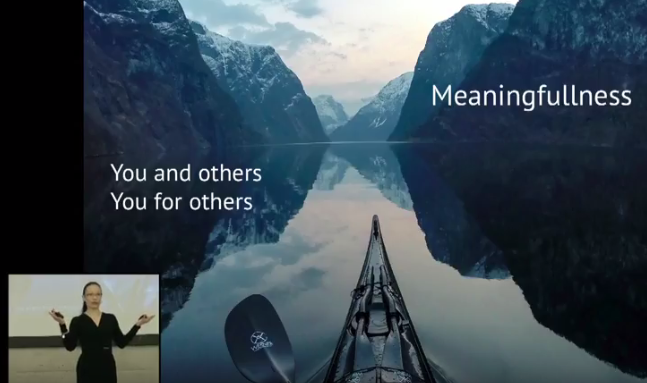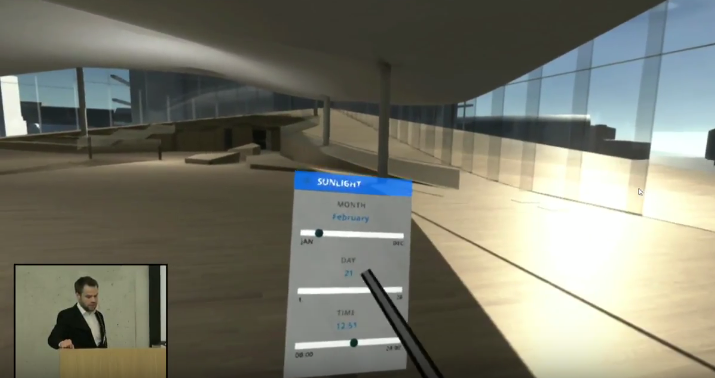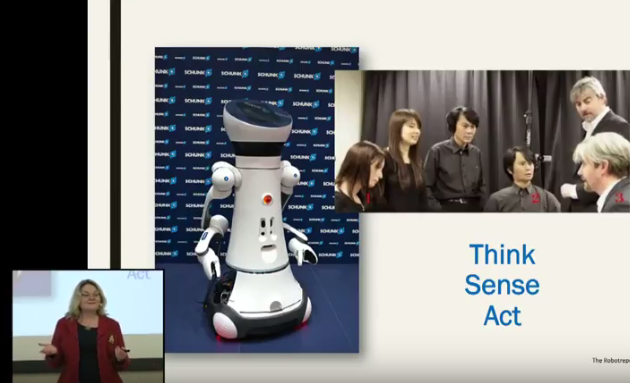The international library conference, 21–22 September, focused on people and spaces. What kinds of library spaces are ideal now, when the relationship between people and the library is transforming?
Library professionals from, for example, Denmark, the Netherlands, Sweden, Australia, Latvia, France, Belgium, Norway, Russia, Estonia and Iceland attended the Reshape conference to tell the stories of their new libraries. Naturally, representatives of Oodi, currently under construction, were also among the participants.
The guiding idea behind the conference was compassion and the library’s role as a provider and generator of compassion. The speech by Professor Anne Birgitta Pessi focused on compassion in a public space. It is important how people behave in a space they share with others; what their active role in relation to others is.
An atmosphere of trust and positivity encourages innovations, wellbeing, joy, creativity and development of cognitive skills – everything that the library wants to promote. Pessi reminds people that compassion is infectious!

Shared soundscape
Citizens will make libraries into their own spaces. As a public space, the library is an institute that best promotes a sense of togetherness – all visitors own it, together. The sense of togetherness is created easily also between different libraries, regardless of country or nationality.
Both joys and problems are universal. For example, the conference brought up the challenging soundscape of reforming libraries, the adaptability of library premises, robotics, new staff arrangements, multiculturalism and virtual technology.
Many of the speakers touched upon the soundscapes of flexible spaces. Meri Kytö from the University of Tampere played examples of library sounds from a tape and talked about customer expectations. What should a library sound like? Everything we do makes a noise. Sound is a communication tool, and many sounds have a certain function.
Before, libraries were monumental institutions where the most popular word was ‘shhhh’. Now, they are changing into urban café milieus, even though many still long for silent spaces. The staff should listen to the sounds of their library and the feedback from the customers and carry out concrete, often quite small measures to achieve a more pleasant soundscape.
Technology as a helping hand
The end of the 2010s is a time of rapid development. During the conference days, the visitors had the opportunity to visit Oodi, in an experience provided by virtual glasses. Sakari Salli spoke about how virtual modelling can be used as a part of the design process. VR-Oodi also offers a look at the outdoor areas, presenting the future of Töölönlahti.

Sakari Salli presents how virtual technology enables showing how sunlight would look, shining through the library windows.
Cristina Andersson’s fascinating speech concerning robotics opened up new perspectives. Due to their expensiveness, robots have become a part of the service structure at a slower pace than expected. However, Andersson says that technology will arrive faster than we realise.
People are worried about whether robots will take our jobs. According to Andersson, the teachable robots will work alongside humans, learning from us. People will always find work. The duty of robots is to be efficient: they can process massive amounts of data, do not have vacations, are able to cope without coffee, always stay healthy and do not complain behind others’ backs.

Cristina Andersson presented the robot experiments around the world. Robot technology will be introduced also in Finnish libraries in the near future.
Sara Jorgensen from Herning library in Denmark presented a new digital library model, in which the website has its own library host or hostess and where the books are presented like in a Netflix selection, available for browsing and loaning.
Peer encouragement
The highlights of the conference were the speeches by library representatives from different countries. It is useful to compare the development of our Oodi to that of other new libraries.
The speech by Sanne Caft from the Copenhagen main library was thought-provoking. ‘The Copenhagen model’ is strict and based on heavy-handed trimming. The staff simplifies and redesigns everything, learns to say no to unnecessary assignments, adapts new roles at a quick pace and reduces face-to-face service. They must be flexible in everything.
In many libraries, such as Dokk-1 in Aarhus, Denmark, people have noticed that both partners and visitors challenge the library all the time. Masses of people and the adaptability of the building are not easy to control. Krist Biebauw from Ghent library in Belgium mentioned a fact brought up by many others: the customers’ paths inside the buildings have surprised the designers. They are often contrary to expectations.
In the end, even in all the new libraries, it is all about a group of stories. Nizar Keblawi from Malmö spoke about story workshops with immigrant children and Marian Morgan-Bindon, our farthest guest from Gold Coast in Australia, about the sense of community in their large country.
Stories will remain a part of libraries because we create new ones ourselves. Chief Librarian Hólmkell Hreinsson from Akureyri in Iceland summarised the entire conference with one sentence: “Libraries change, but the human heart stays the same.” We want to be together, as a part of the story.
See all the conference addresses: kirjastokaista.net
Main picture of Meri Kytö: Sampo Matikainen/Hanna Hopea
